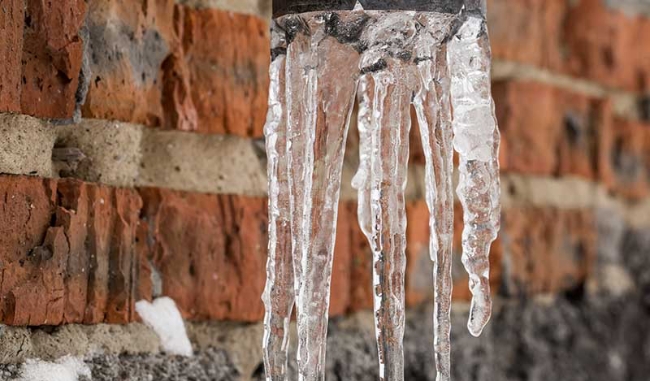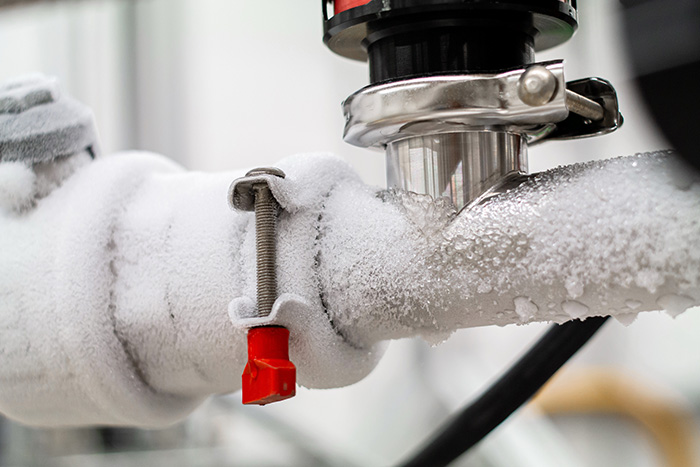Just about every person has his or her own perception about How to Prevent Your Pipes From Freezing.

Winter can damage your pipes, specifically by freezing pipelines. Right here's how to stop it from occurring and what to do if it does.
Introduction
As temperature levels decrease, the threat of frozen pipes boosts, potentially resulting in costly fixings and water damages. Comprehending exactly how to prevent frozen pipelines is vital for house owners in cold climates.
Recognizing Frozen Pipelines
What triggers pipelines to freeze?
Pipelines ice up when exposed to temperatures below 32 ° F (0 ° C) for extended durations. As water inside the pipelines ices up, it increases, taxing the pipeline wall surfaces and possibly triggering them to burst.
Dangers and damages
Icy pipelines can bring about water system disturbances, residential property damage, and expensive fixings. Ruptured pipes can flooding homes and cause extensive architectural damage.
Indicators of Frozen Water Lines
Identifying icy pipes early can avoid them from rupturing.
How to determine icy pipelines
Seek decreased water flow from faucets, unusual smells or noises from pipes, and visible frost on exposed pipelines.
Prevention Tips
Shielding prone pipelines
Cover pipelines in insulation sleeves or utilize heat tape to protect them from freezing temperature levels. Focus on pipelines in unheated or outside locations of the home.
Heating techniques
Keep interior spaces effectively heated, specifically locations with plumbing. Open up closet doors to allow cozy air to circulate around pipes under sinks.
Securing Exterior Plumbing
Garden hose pipes and outside taps
Separate and drain pipes garden pipes prior to winter season. Set up frost-proof faucets or cover outdoor taps with insulated caps.
What to Do If Your Pipes Freeze
Immediate activities to take
If you presume icy pipes, keep taps open up to ease stress as the ice melts. Utilize a hairdryer or towels soaked in hot water to thaw pipelines gradually.
Long-Term Solutions
Architectural adjustments
Think about rerouting pipes away from exterior wall surfaces or unheated areas. Include additional insulation to attic rooms, cellars, and crawl spaces.
Updating insulation
Buy top quality insulation for pipes, attics, and walls. Appropriate insulation assists preserve regular temperatures and reduces the danger of frozen pipes.
Final thought
Avoiding frozen pipes calls for positive steps and quick responses. By understanding the reasons, indications, and safety nets, homeowners can shield their plumbing during cold weather.
5 Ways to Prevent Frozen Pipes
Drain Outdoor Faucets and Disconnect Hoses
First, close the shut-off valve that controls the flow of water in the pipe to your outdoor faucet. Then, head outside to disconnect and drain your hose and open the outdoor faucet to allow the water to completely drain out of the line. Turn off the faucet when done. Finally, head back to the shut-off valve and drain the remaining water inside the pipe into a bucket or container. Additionally, if you have a home irrigation system, you should consider hiring an expert to clear the system of water each year.
Insulate Pipes
One of the best and most cost-effective methods for preventing frozen water pipes is to wrap your pipes with insulation. This is especially important for areas in your home that aren’t exposed to heat, such as an attic. We suggest using foam sleeves, which can typically be found at your local hardware store.
Keep Heat Running at 65
Your pipes are located inside your walls, and the temperature there is much colder than the rest of the house. To prevent your pipes from freezing, The Insurance Information Institute suggests that you keep your home heated to at least 65 degrees, even when traveling. You may want to invest in smart devices that can keep an eye on the temperature in your home while you’re away.
Leave Water Dripping
Moving water — even a small trickle — can prevent ice from forming inside your pipes. When freezing temps are imminent, start a drip of water from all faucets that serve exposed pipes. Leaving a few faucets running will also help relieve pressure inside the pipes and help prevent a rupture if the water inside freezes.
Open Cupboard Doors
Warm your kitchen and bathroom pipes by opening cupboards and vanities. You should also leave your interior doors ajar to help warm air circulate evenly throughout your home.

Do you really like more info about How to prepare your home plumbing for winter weather? Create feedback below. We'd be happy to listen to your opinion about this entry. We hope that you come back again later on. Liked our piece of writing? Please quickly share it. Help others locate it. Thanks a bunch for your time. Kindly come by our site back soon.
Click Here